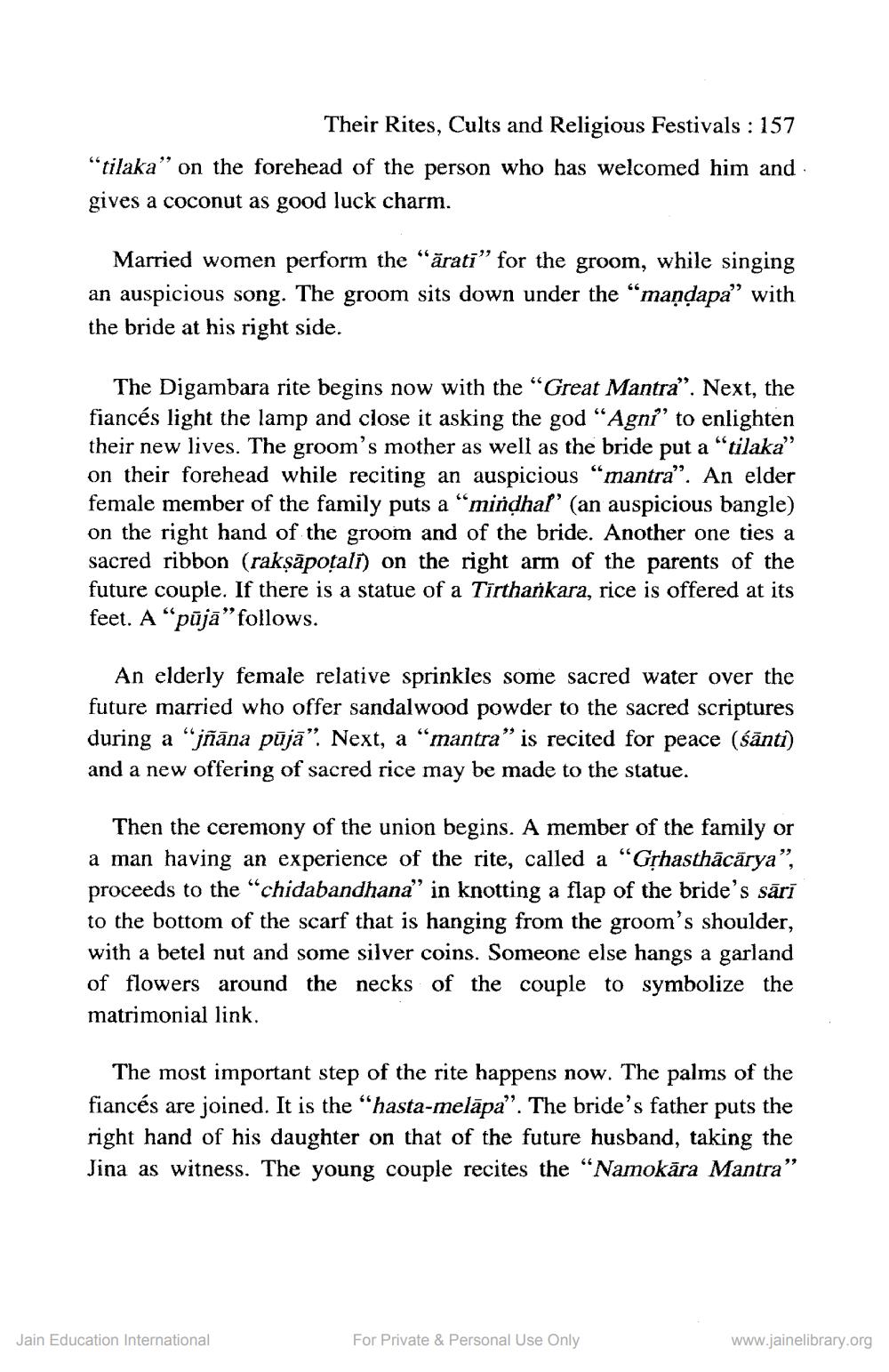________________
Their Rites, Cults and Religious Festivals : 157
"tilaka” on the forehead of the person who has welcomed him and gives a coconut as good luck charm.
Married women perform the "arati” for the groom, while singing an auspicious song. The groom sits down under the “maņdapa" with the bride at his right side.
The Digambara rite begins now with the “Great Mantra”. Next, the fiancés light the lamp and close it asking the god "Agni" to enlighten their new lives. The groom's mother as well as the bride put a "tilaka" on their forehead while reciting an auspicious "mantra”. An elder female member of the family puts a “mindhal' (an auspicious bangle) on the right hand of the groom and of the bride. Another one ties a sacred ribbon (raksāpotali) on the right arm of the parents of the future couple. If there is a statue of a Tirthankara, rice is offered at its feet. A “pājā" follows.
An elderly female relative sprinkles some sacred water over the future married who offer sandalwood powder to the sacred scriptures during a “jñāna pājā”. Next, a “mantra” is recited for peace (śānti) and a new offering of sacred rice may be made to the statue.
Then the ceremony of the union begins. A member of the family or a man having an experience of the rite, called a "Grhasthācārya", proceeds to the “chidabandhana" in knotting a flap of the bride's sārī to the bottom of the scarf that is hanging from the groom's shoulder, with a betel nut and some silver coins. Someone else hangs a garland of flowers around the necks of the couple to symbolize the matrimonial link.
The most important step of the rite happens now. The palms of the fiances are joined. It is the “hasta-melāpa”. The bride's father puts the right hand of his daughter on that of the future husband, taking the Jina as witness. The young couple recites the “Namokāra Mantra"
Jain Education International
For Private & Personal Use Only
www.jainelibrary.org




